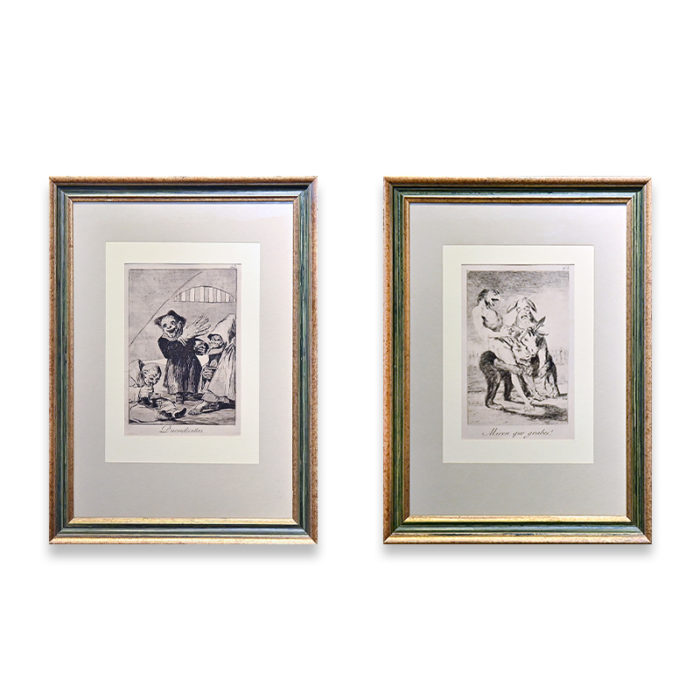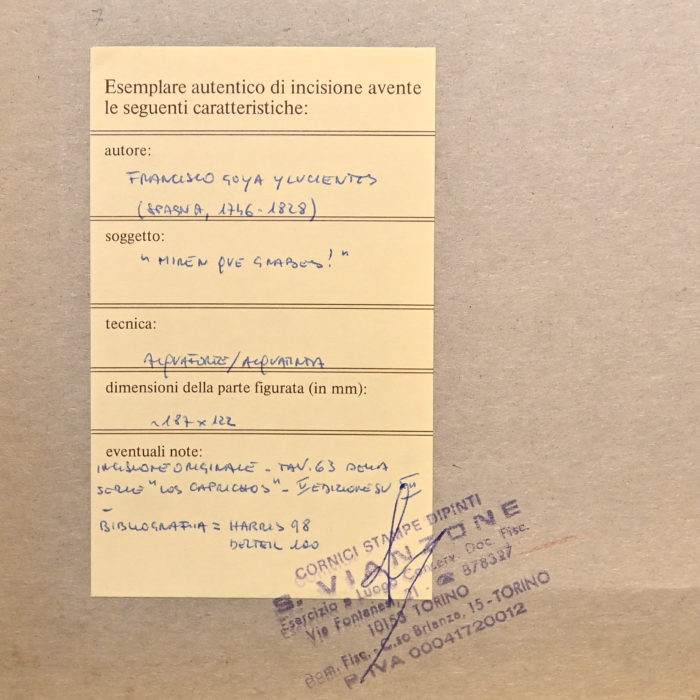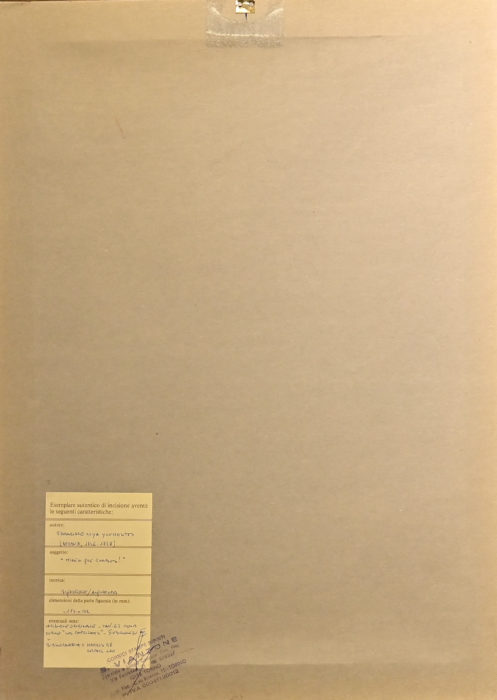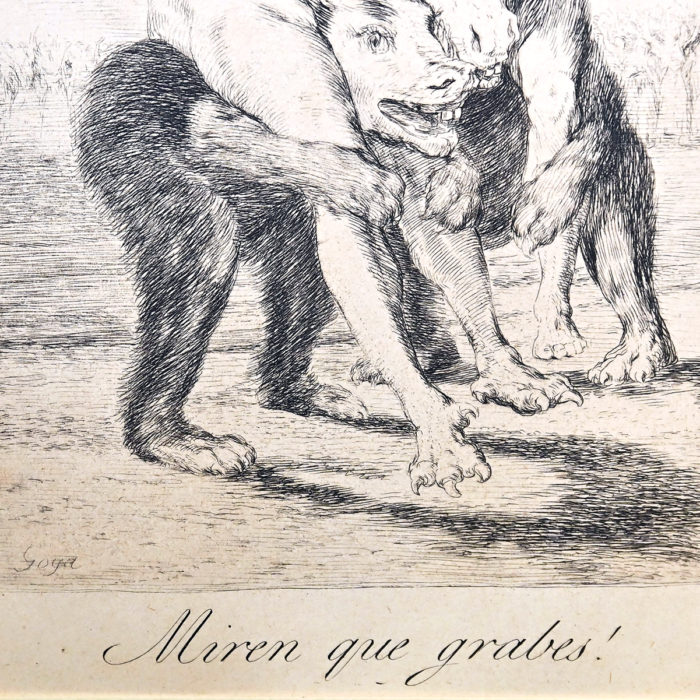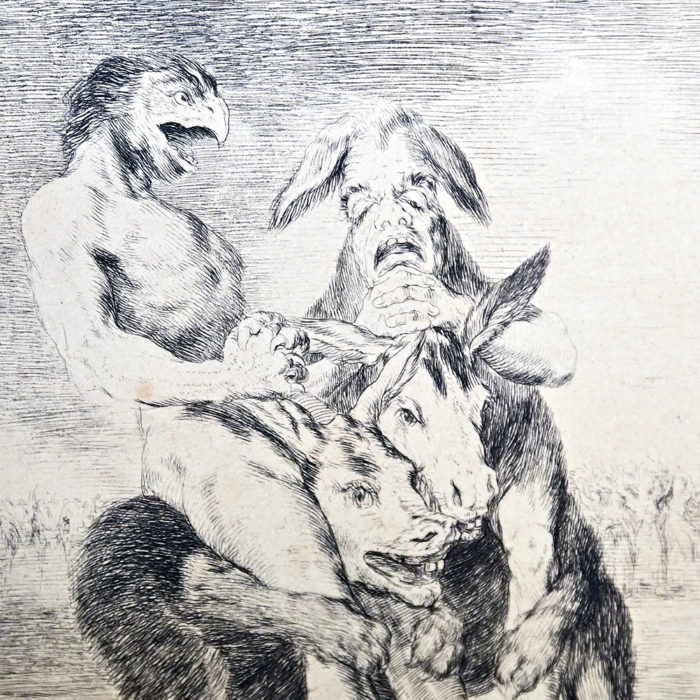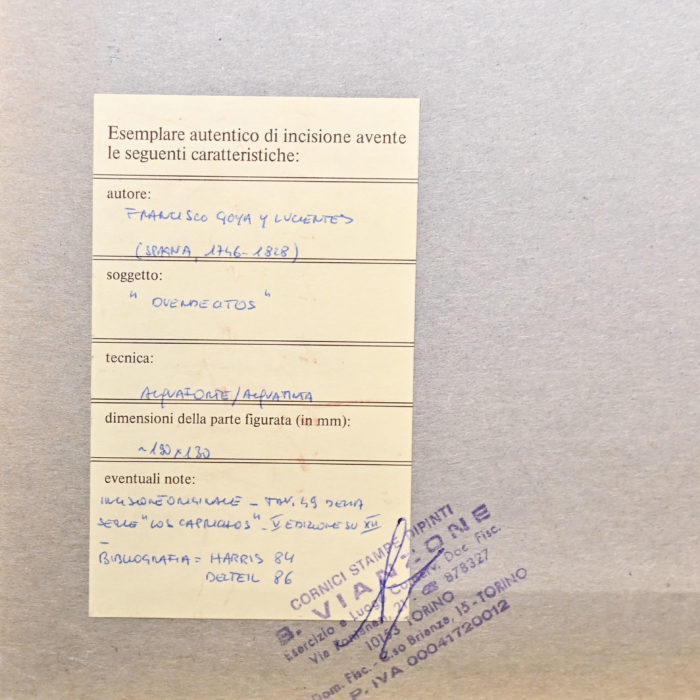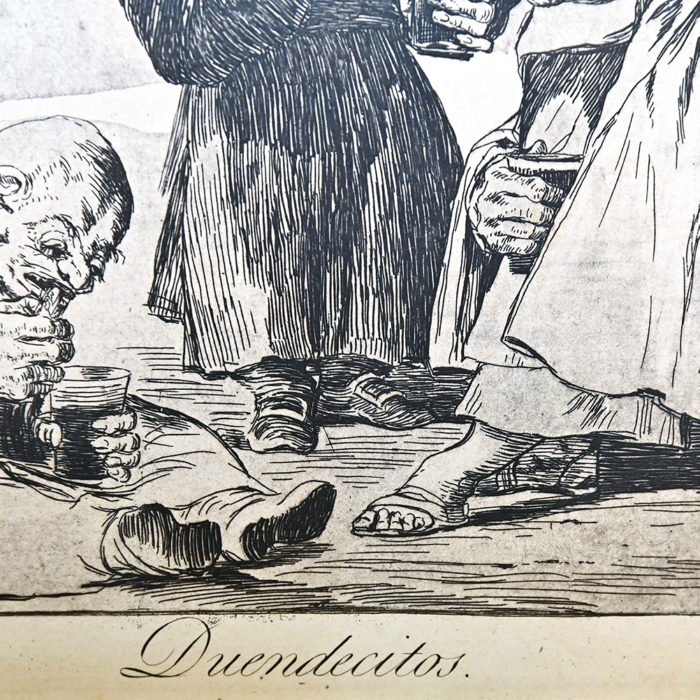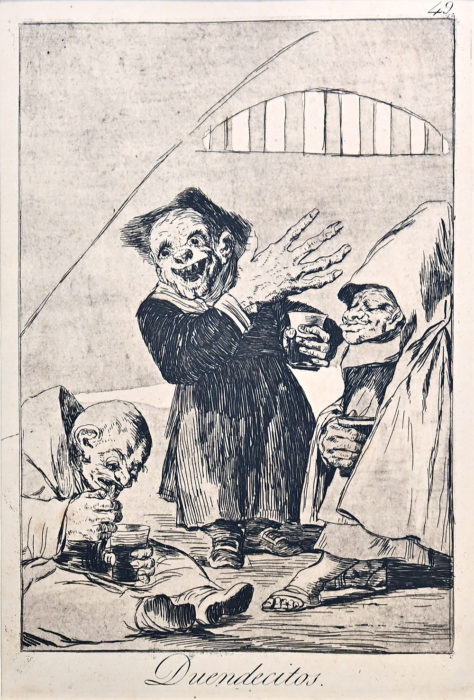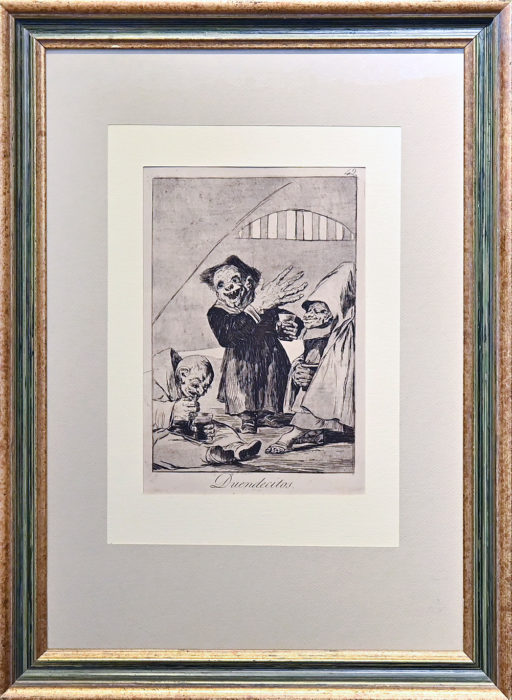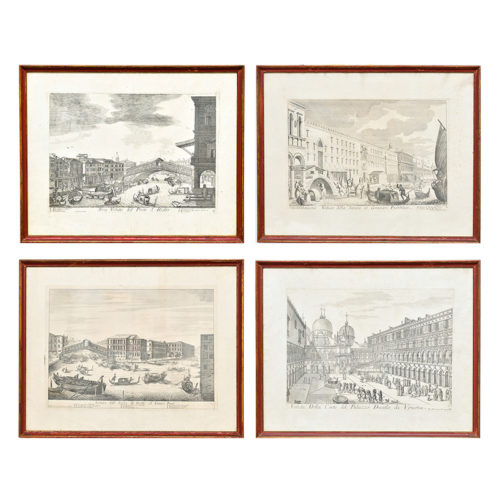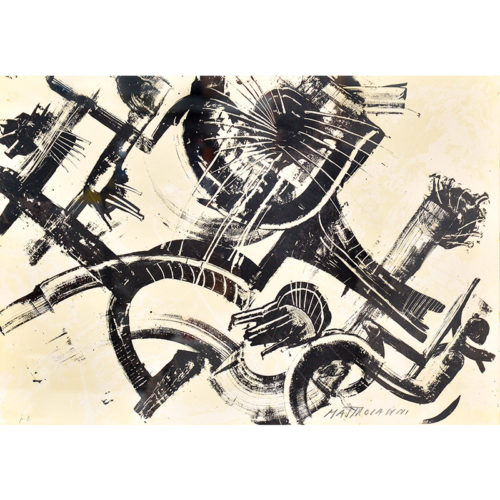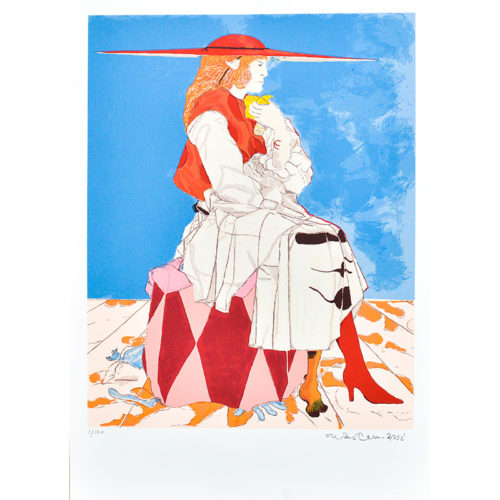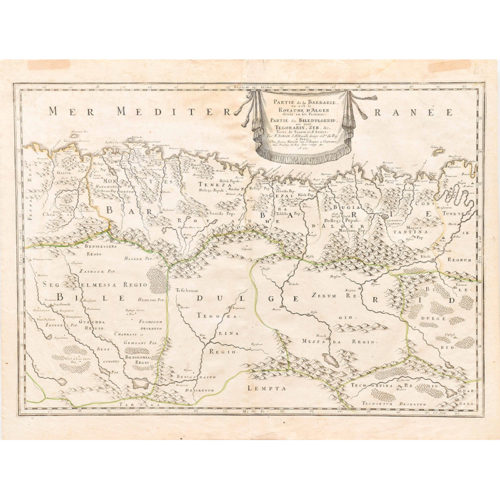“Duendecitos” etching / aquatint by Francisco Goya y Lucientes (Fuentedos, Spain 1746 – Bordeaux 1828).
Original etching – Plate 49 of the “Los caprichos” series – V edition on XII.
Bibliography: Harris 84; Delteil 86.
Provenance Vianzone, Turin.
Dimensions in mm: 190 x 130 “Miren que grabes!” etching / aquatint by Francisco Goya y Lucientes (Fuentedos, Spain 1746 – Bordeaux 1828).
Original etching – Plate 63 of the “Los caprichos” series – V edition on XII.
Bibliography: Harris 98; Delteil 100.
Provenance Vianzone, Turin.
Dimensions in mm: 187 x 122
The Capricci represent the most famous series of engravings by the Spanish master: 80 plates including etchings and aquatints of large format, made in 1799. These are plates that give rise to imaginative, pungent and grotesque representations that are affected, on a stylistic level, by an Italian influence due to the long stay in Rome in 1770. The main theme is the description of the evils of the world, from deceptions to prejudices, up to the lies of the Spanish society of the years in which Goya himself lived, in a heated controversy towards the clergy and the nobility. At the time of their publication, the drawings caused a sensation, precisely due to the fact that numerous notables of the time were recognized in them. So much was the clamor that even the Holy Inquisition had to intervene, to avoid the publication of those prints deemed excessive and blasphemous. This was probably what determined the poor success of I Capricci, so that the painter was forced to sell the entire first print run to King Charles IV, in exchange for a scholarship for his son Javier. The success of the series increased with the second edition of 1855, until it became one of the most important and celebrated graphic works in the history of art.
Period: Second half of the 19th century
Measurements: In frame H 45 x W 33 x D 2.5 cm / H 19 x W 13 cm // In frame H 44 x W 32.5 x D 2.5 cm / H 18.7 x W 12.2 cm
